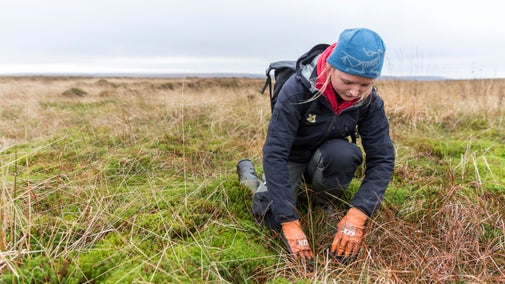Why is peat so important?
Peat is vital to the environment as it helps provide multiple ecosystem services:
- It acts as a carbon store; UK peatland stores more carbon than the combined forests of Britain, France and Germany
- It's a unique habitat for a variety of rare species
- It can help to clean and slow the flow of water, as it can hold up to 20 times its weight in water
- It also informs archaeological research, as it preserves a record of past vegetation, landscapes and people.
Peat must remain wet to perform these functions, however it's been cultivated, drained and degraded for centuries.
When it's dry, peat is easily eroded and washed away. It releases carbon dioxide and is one of the biggest sources of greenhouse gas, as well as becoming a fire hazard.
Peatlands in our care
We look after 40 peatland Sites of Special Scientific Interest (SSSI), 3 per cent of raised bogs, significant fens and valley mires, and huge tracts of blanket bog. Our peatlands in England and Wales hold 2 per cent of the total carbon in the UK, in soil and vegetation.
Some of our peatland has been damaged in the past by drainage, over-grazing, burning and extraction. We’re working hard to reverse these negative impacts and are now managing and restoring many areas to create resilient eco-systems, which will increase carbon storage capacity and reduce emissions.







